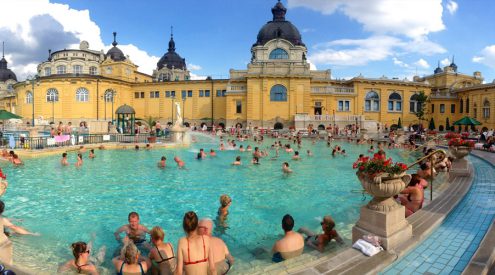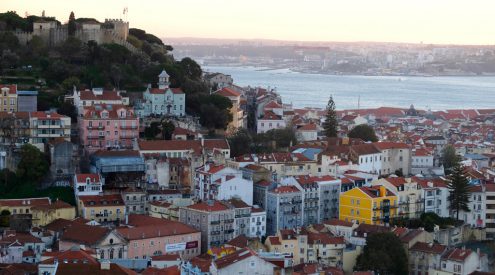Manaus is not a pretty city. It groans with assembly plants – Samsung, Nokia, Sony, Hyundai – crowding the outskirts after the government made Manaus a free trade zone. Very little is actually made here; components are mostly shipped from India and China, but a lot is assembled and companies benefit from the low taxes. However, it is a city with attitude.
And standing at its centre is a building which exemplifies Manaus’ somewhat quirky relationship with international trade. The Manaus Opera House looks a little like a forgotten slice of Neapolitan ice cream. As children, we hungered for this exotic dessert, only to demolish the vanilla and chocolate sections leaving the strawberry forlornly melting on the plate. Jorge dos Santos’s design has distinct similarities.
The opera house was built in 1881, at the height of the Amazon’s rubber boom. Inspired by Versailles, the construction process took 15 years, largely because the architects refused to use local materials. Thirty six thousand enamelled tiles were imported from Alsace to construct the dome, while the supporting iron columns were fabricated in Scotland and the railings in England. The chandeliers had their bases brought over from France and their crystals imported from Italy. Even the opera house’s wooden floors were largely imported, with hundreds of tonnes of walnut and oak being shipped from Portugal.
Such idiosyncrasies make more sense when framed in the context of the city’s aspiring elite. The population was 45,000 when the opera house opened, but only a fraction attended performances. The 701 seats were dominated by the Spanish, English and Japanese merchants, rarely interested in the opera, but desperate to parade their wealth. The most expensive seats were in the highest circle, affording terrible views of the opera, but a chance to look down on your contemporaries. The governor’s box was closest to stage, ensuring most of the action was obscured from his view, but allowing everybody to see him posturing.
And outside the main hall, things were equally perverse. Each sex had their own preparation room in which to change outfits after the opera. Whilst the women’s is simple affair with space for full-length mirrors, the men’s overlooks a brothel. Filled with porcelain spittoons (imported from England) it even had a secret staircase leading closer to the brothel. Such architectural foresight is rare these days.
One can only imagine a heady evening, as Caruso combined with coca, and men and women sweated into their frocks and breeches. But such extravagances would only be short lived. As the rubber price collapsed in the 1920s the opera house dwindled. In 1925 it closed its doors for 20 years only to re-open as offices for the American rubber companies, trying to restore rubber production during World War Two.
Nowadays, it is a much more democratic affair. Tickets start at Rs20 (8) and there are free events. The brothel is now for sale (a snip at Rs2 million), whilst the spittoons have been incarcerated in the museum. But the international flavour remains, with a host of foreign artists coming to perform and visits of luminaries such as Prince Charles and Matt Dillon commemorated with by plaque. Amy Winehouse and Jarimoquai were blaring from speakers during our visit there and I heard they might even sell ice cream during the interval. Neapolitan perhaps?
For more about Atlantic Rising’s journey around the Atlantic visit www.atlanticrising.org.

















